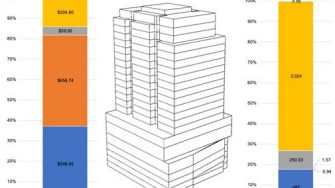
Problem Statement
Buildings contribute to environmental degradation and greenhouse gas emissions across their entire lifecycle – from the extraction of the raw materials needed to create them, to their operation, to their eventual decommissioning and demolition. Historically we’ve focussed only on improving building performance, and reducing greenhouse gas emissions, in the ‘operational phase’ of a building’s life. However, there is robust evidence that the emissions caused by materials, construction, maintenance and demolition have a significant and adverse effect on the environment. These emissions are known as ‘embodied carbon’. In a typical building today, embodied carbon can be responsible for more than half of the total greenhouse gas emissions a building will release across its lifecycle.
Solutions
High Performance Architecture research in this area is concerned with three factors:
- Understanding the significance of embodied carbon – at a building, precinct and national level
- Developing strategies to measure, compare and benchmark embodied carbon in buildings
- Developing strategies to reduce embodied carbon. This includes the refurbishment and extension of buildings instead of their demolition, the use of low-carbon materials such as mass timber, and dematerialisation strategies in building design and development.
Projects
- NABERS Embodied Emissions Initiative (2022)
- Whole Lifecycle Carbon Impact of Timber Fit-Out Systems (2022)
- Modelling Ambitious Climate Mitigation Pathways for Australia's Built Environment (2021)
- Carbon Value Engineering (2019)
